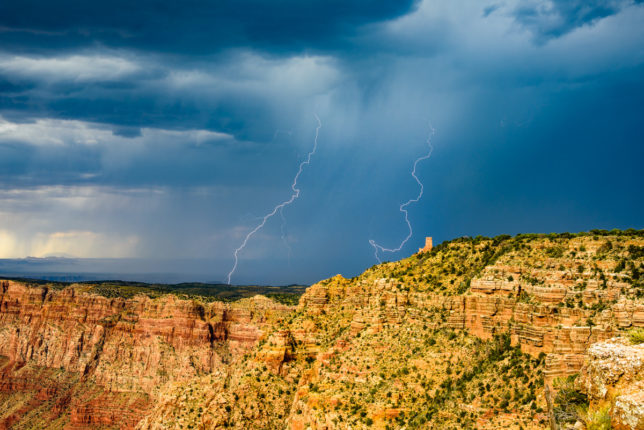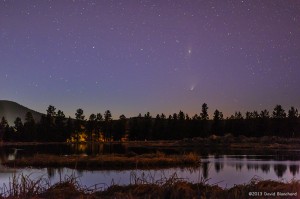In a previous post I wrote how the North American Monsoon (NAM) was very late getting started in July. Fortunately, once started, it resulted in normal precipitation amounts for the month of August. Here are photographs and discussion of some of the events during the month.
Tag: Kachina Wetlands
Lightning and Reflections
We have been in a “monsoon break” in northern Arizona for a week or so, but there can still be some convection during these periods. A few days ago, some isolated showers and thunderstorms developed to the north of the San Francisco Peak in the late afternoon and early evening.
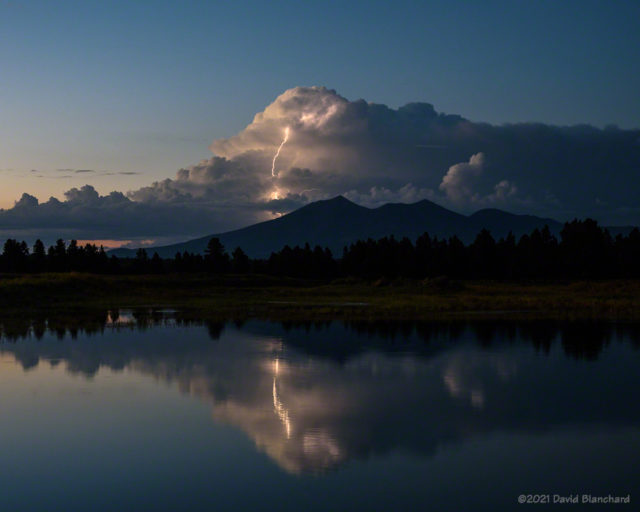
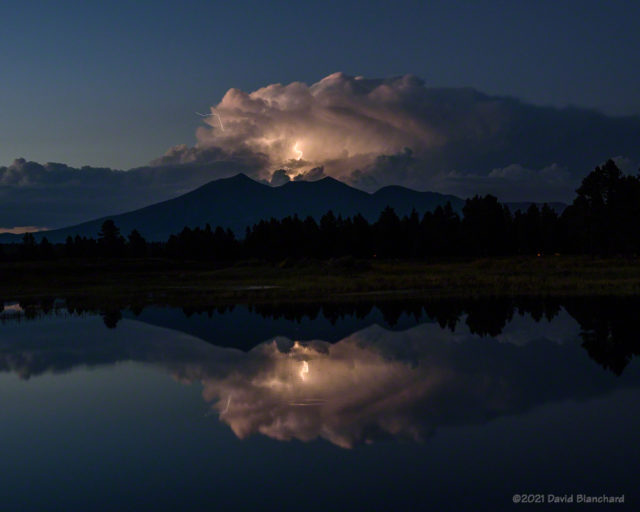
This was a good opportunity to capture images of thunderstorms and lightning with reflections in the ponds of the Kachina Wetlands.
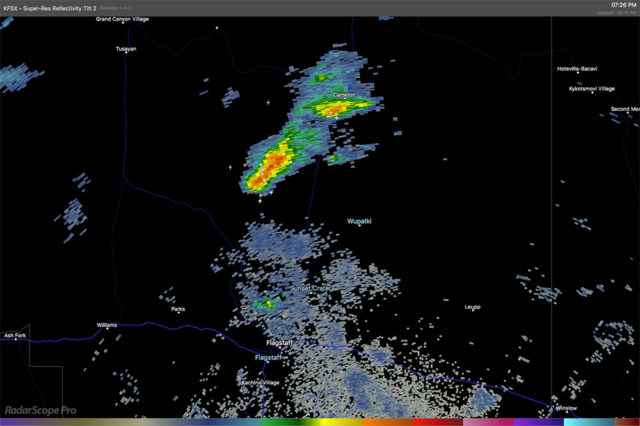
Above is an image showing the thunderstorms and lightning north of the peaks.
One more thing: the mosquitos were pretty intense—but it was worth it.
Lightning and shelf clouds
The past few days have produced interesting storms across northern Arizona.
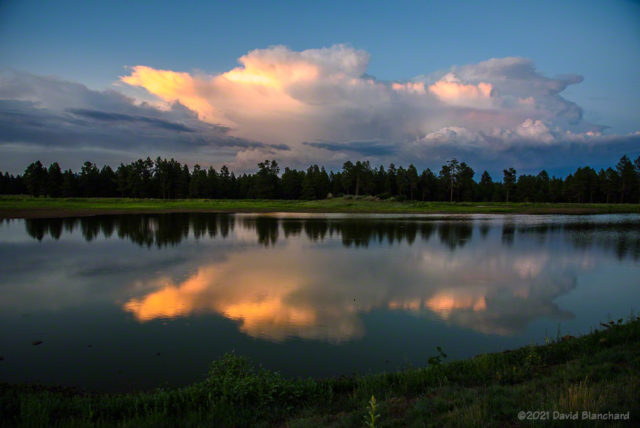
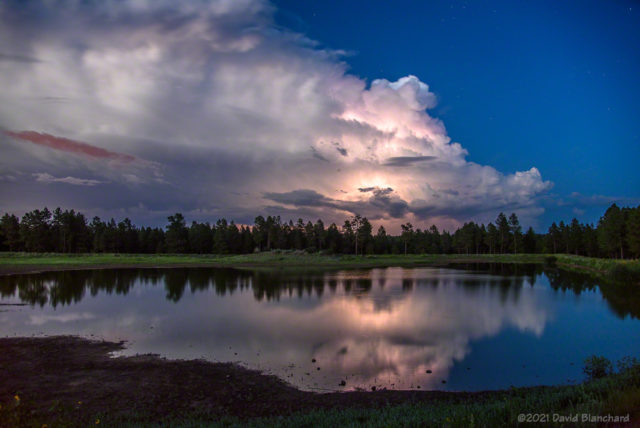
An isolated storm developed around sunset and produced both wonderful colors and lightning. Most of the lightning, however, was on the other side of the updraft so the storm instead was lit from the inside like a lightbulb. The storm colors and lightning was nicely reflected in the waters of the Kachina Wetlands.



A few days later a large line of convective storms moved southwestward across the state and produced a haboob in the lower (and drier) elevations. As the leading edge of the rain-cooled air moved across the San Francisco peaks the clouds quickly enveloped the mountains. About an hour later, the shelf cloud arrived in Sedona and new storms began to develop.
Zodiacal Light – Spring 2014
With exceptionally clear and dark skies it was a good time to capture an image of the zodiacal light. Here is what Wikipedia has to say about this astronomical phenomenon.
Zodiacal light is a faint, roughly triangular, diffuse white glow seen in the night sky that appears to extend up from the vicinity of the Sun along the ecliptic or zodiac. It is best seen just after sunset and before sunrise in spring and autumn when the zodiac is at a steep angle to the horizon. Caused by sunlight scattered by space dust in the zodiacal cloud, it is so faint that either moonlight or light pollution renders it invisible.
With no moon and Flagstaff’s dark skies, it’s pretty easy to see the zodiacal light.
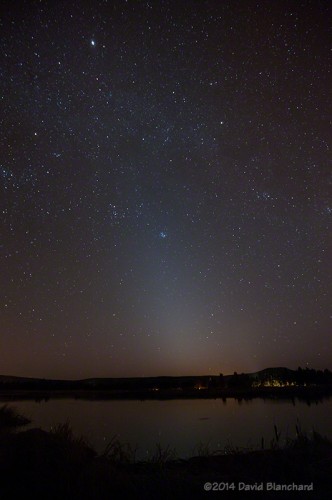
And speaking of dark skies, Flagstaff became the World’s First “International Dark Sky City” way back on October 24, 2001. From the Flagstaff Dark Skies site:
In 1958, Flagstaff pioneered the world’s first lighting ordinance designed to preserve the night for astronomy. Since 1958, Flagstaff astronomers have mostly relied on quiet, friendly diplomacy to protect the night sky…
Flagstaff’s dry, clear skies and dark, cloudless nights drew Percival Lowell to town in 1894. The townspeople deeded the eccentric, wealthy Bostoner a pine-clad knoll atop the mesa immediately west of town as an observatory site, and built him a wagon road to reach it. The area became known as Mars Hill because of Lowell’s famous passion for the red planet.
An exposure of 30s, ISO3200, f/4 was enough to bring out the details of the white glow as well as its reflection in the waters of the Kachina Wetlands. At the top of the image is the bright planet Jupiter.
